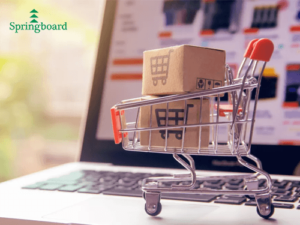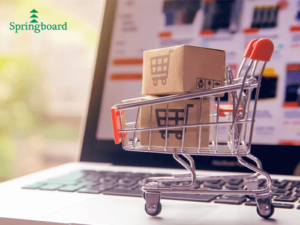June 10, 2024 — 5min read
Struggling with the Speed of Online Shopping Growth? You’re Not Alone!
Are you feeling the pressure of managing an online store in the bustling e-commerce scene of the Philippines? You’re not alone. In recent years, online shopping has encountered rapid growth globally. With more people engaging in online shopping, businesses worldwide are revising their retail strategies and expanding their presence on digital platforms. The Philippines is no exception to this trend. As more Filipinos embrace digital platforms for shopping, businesses face increasing competition and new challenges.

Increase Internet Usage
Eight out of ten Filipinos reported feeling that they had spent more time online recently. This sentiment was particularly influential among the younger generation, those aged 18-24, who indicated spending more time online than other age or gender groups. The internet now plays a massive role in the lives of Filipinos, not just adults but also teenagers and kids. The rapid expansion of internet access, particularly mobile internet, has been a cornerstone of e-commerce growth (Unleashing the Rise of eCommerce in the Philippines, 2023). Moreover, as of 2023, internet penetration in the Philippines is around 73%, with over 76 million internet users. Driven by the younger generation, digital presence bodes well for the future of the e-commerce market in the Philippines (Kemp, 2023). The rapid expansion of internet access, especially mobile internet, has been pivotal in the growth of e-commerce.
Massive Use of Mobile Devices
Another factor that drives e-commerce growth is Mobile devices. With over 98% of Filipino adults owning a mobile device, e-commerce growth is driven through digital transformation. Despite only 70% owning laptops, high mobile usage and improved internet speed have increased access to online stores and transactions. For instance, mobile payment platforms like GCash and PayMaya make transactions more accessible and secure, encouraging online shopping (Kamenov, 2023). Meanwhile, e-commerce leaders Lazada, Shopee, and Zalora have invested in user-friendly mobile apps, enhancing the shopping experience and consumer engagement (Unleashing the Rise of eCommerce in the Philippines, 2023). They also offer faster delivery and expanded services through various programs and partnerships, further driving market growth. With that mentioned, the rapid development in e-commerce demonstrates how technological advancements and strategic investments are transforming shopping in the Philippines, providing consumers with more convenience and options while fostering a thriving digital economy.
Market Growth During and After the COVID-19 Pandemic
The COVID-19 pandemic significantly caused e-commerce growth in the Philippines, highlighting the importance of digitalization for businesses. The pandemic was one of the most severe business disruptions in the Philippines, causing many closures and risking economic collapse. In addition, lockdowns and quarantines reduced mobility by 80% at the peak of 2020 (Philippines E-Commerce Market – Growth, Trends, and Forecasts, 2023). Despite economic setbacks, the pandemic highlighted digitalization’s potential, fueling demand for online shopping (The State of Philippines, 2023). Although post-lockdown mobility improved, retail e-commerce continued to thrive in 2022. Physical stores are rebounding post-pandemic, with retailers recognizing e-commerce for growth. Lazada CEO Carlos Barrera affirms ongoing e-commerce growth. Post-pandemic, Filipinos exhibit increased trust in e-commerce and online banking (Fernando, n.d).
Digital Transformation and Technological Advancements
Local e-commerce platforms use AI and machine learning to offer personalized shopping, better inventory management, and efficient chatbot customer service. This use of advanced technologies should make users feel the excitement of innovation and progress in the e-commerce industry. Furthermore, Philippine brands are adopting augmented reality (AR) and virtual reality (VR) technologies to let customers virtually try new products, like clothing and cosmetics, before purchasing. Both VR and AR improve customer experience and provide numerous benefits in the e-commerce industry. To boost sales, e-commerce companies use AR and VR in-house or through outsourcing providers in the Philippines. These high-tech tools reduce costs by lowering the need for product demonstrations and physical showrooms (E-Commerce Outsourcing in the Philippines: How VR and AI Can Improve Sales, Customer Experience, 2023). They aim to provide personalized experiences, optimize inventory management, and improve customer service.
Consumer Behavior Towards E-commerce
Consumer behavior towards e-commerce is heavily influenced by digital marketing and major buying holidays. Filipinos spend 10 hours using social media platforms daily, proving they are active users (Chan, 2023). Integrating e-commerce with social media platforms like Facebook, Instagram, and TikTok has developed new avenues for shopping. Influencers and social media marketing campaigns are greatly influencing consumer purchasing decisions. One example would be live streaming on social media platforms, where sellers showcase products in real time. This has gained tremendous popularity, merging entertainment with e-commerce (What’s Selling, and Why Is It So Popular, 2023). The next factor affecting consumer preference is Major Buying Holiday promotions. Double-digit monthly promotions in the Philippines, like the 9.9 and 11.11 sales, are well-known. Events like birthday and midyear sales attract many consumers looking for discounts (Philippines – eCommerce, 2024). These platforms also deliver campaign packages for participating retail companies.
The Future of E-commerce in the Philippines
Looking ahead, the future of e-commerce in the Philippines is promising, with growth fueled by rapid technological advancements. Innovations like AI, AR, and VR revolutionize shopping experiences, ensuring secure and personalized transactions. Mobile commerce, facilitated by the prevalent use of smartphones and suitable payment solutions like GCash and PayMaya, is rising. Digital and influencer marketing strategies on social media platforms are shaping consumer behaviors. This immediate expansion of e-commerce offers businesses opportunities to strengthen their visibility and establish a solid online presence. Nonetheless, challenges such as logistical expenses, cybersecurity threats, and stiff competition persist (Marco, 2024). Navigating the fast-growing e-commerce market in the Philippines can be challenging. Don’t let the complexities of e-commerce growth become your downfall. With Springboard Philippines, you can turn these challenges into your competitive edge.
For more information, visit our website Springboard Philippines or contact us at [email protected] for the latest updates and opportunities.
References
Chan, N. (2023, March 8). Filipino Online Shopping Behavior: Statistics & Trends You Need to Know. Spiralytics. Retrieved November 21, 2023, from https://www.spiralytics.com/blog/filipino-online-shopping-behavior-statistics-trends/
e-Commerce Philippines (2022). Roadmap. (n.d.). DTI ECommerce. Retrieved November 21, 2023, from https://ecommerce.dti.gov.ph/madali/images/eCommerce_Philippines_Roadmap_2022.pdf
E-commerce outsourcing in the Philippines: How VR and AI can improve sales, customer experience. (2023, March 14). Philstar.com. Retrieved June 6, 2024, from https://www.philstar.com/business/technology/2023/03/14/2251373/e-commerce-outsourcing-philippines-how-vr-and-ai-can-improve-sales-customer-experience
Fernando. (n.d.). E-Commerce in the Post-Pandemic Philippines Part 1 Is e-commerce here to stay? NRI (Singapore). Retrieved November 21, 2023, from https://nrisg.com/e-commerce-in-the-post-pandemic-philippines-part-1is-e-commerce-here-to-stay/
Kamenov, T. (2023, December 4). The Rise of E-commerce in the Philippines: Opportunities and Challenges. Wikipedia. Retrieved June 7, 2024, from https://nextbasket.com/ph/the-rise-of-e-commerce-in-the-philippines-opportunities-and-challenges/
Kemp, S. (2023, February 9). Digital 2023: The Philippines — DataReportal – Global Digital Insights. DataReportal. Retrieved June 7, 2024, from https://datareportal.com/reports/digital-2023-philippines
Marco, K. (2023, April 17). eCommerce in The Philippines: Challenges and Opportunities. RUSH Technologies. Retrieved June 7, 2024, from https://www.rush.ph/blog/ecommerce-in-the-philippines-challenges-and-opportunities
Philippines E-commerce Market – Trends & Growth. (2023). Mordor Intelligence. Retrieved November 21, 2023, from https://www.mordorintelligence.com/industry-reports/philippines-ecommerce-market
The State of Philippine eCommerce. (2023, April 28). ZhenHub. Retrieved November 21, 2023, from https://zhenhub.com/blog/state-of-philippine-ecommerce/
UNDERSTANDING E-COMMERCE IN THE PHILIPPINES. (n.d.). DTI | Basta e-Commerce MADALI | eCommerce Philippines 2022 Roadmap. Retrieved November 21, 2023, from https://ecommerce.dti.gov.ph/madali/situationer.html
Unleashing the Rise of eCommerce in the Philippines. (2023, January 20). Standard Insights. Retrieved June 6, 2024, from https://standard-insights.com/blog/rise-of-ecommerce-in-the-philippines/
What’s live selling, and why is it so popular? (2023, September 20). Payo: Leading the Way. Retrieved June 6, 2024, from https://payo.asia/whats-live-selling-and-why-is-it-so-popular/
Struggling with the Speed of Online Shopping Growth? You’re Not Alone!
Are you feeling the pressure of managing an online store in the bustling e-commerce scene of the Philippines? You’re not alone. In recent years, online shopping has encountered rapid growth globally. With more people engaging in online shopping, businesses worldwide are revising their retail strategies and expanding their presence on digital platforms. The Philippines is no exception to this trend. As more Filipinos embrace digital platforms for shopping, businesses face increasing competition and new challenges.
June 10, 2024 — 5min read

Increase Internet Usage
Eight out of ten Filipinos reported feeling that they had spent more time online recently. This sentiment was particularly influential among the younger generation, those aged 18-24, who indicated spending more time online than other age or gender groups. The internet now plays a massive role in the lives of Filipinos, not just adults but also teenagers and kids. The rapid expansion of internet access, particularly mobile internet, has been a cornerstone of e-commerce growth (Unleashing the Rise of eCommerce in the Philippines, 2023). Moreover, as of 2023, internet penetration in the Philippines is around 73%, with over 76 million internet users. Driven by the younger generation, digital presence bodes well for the future of the e-commerce market in the Philippines (Kemp, 2023). The rapid expansion of internet access, especially mobile internet, has been pivotal in the growth of e-commerce.
Massive Use of Mobile Devices
Another factor that drives e-commerce growth is Mobile devices. With over 98% of Filipino adults owning a mobile device, e-commerce growth is driven through digital transformation. Despite only 70% owning laptops, high mobile usage and improved internet speed have increased access to online stores and transactions. For instance, mobile payment platforms like GCash and PayMaya make transactions more accessible and secure, encouraging online shopping (Kamenov, 2023). Meanwhile, e-commerce leaders Lazada, Shopee, and Zalora have invested in user-friendly mobile apps, enhancing the shopping experience and consumer engagement (Unleashing the Rise of eCommerce in the Philippines, 2023). They also offer faster delivery and expanded services through various programs and partnerships, further driving market growth. With that mentioned, the rapid development in e-commerce demonstrates how technological advancements and strategic investments are transforming shopping in the Philippines, providing consumers with more convenience and options while fostering a thriving digital economy.
Market Growth During and After the COVID-19 Pandemic
The COVID-19 pandemic significantly caused e-commerce growth in the Philippines, highlighting the importance of digitalization for businesses. The pandemic was one of the most severe business disruptions in the Philippines, causing many closures and risking economic collapse. In addition, lockdowns and quarantines reduced mobility by 80% at the peak of 2020 (Philippines E-Commerce Market – Growth, Trends, and Forecasts, 2023). Despite economic setbacks, the pandemic highlighted digitalization’s potential, fueling demand for online shopping (The State of Philippines, 2023). Although post-lockdown mobility improved, retail e-commerce continued to thrive in 2022. Physical stores are rebounding post-pandemic, with retailers recognizing e-commerce for growth. Lazada CEO Carlos Barrera affirms ongoing e-commerce growth. Post-pandemic, Filipinos exhibit increased trust in e-commerce and online banking (Fernando, n.d).
Digital Transformation and Technological Advancements
Local e-commerce platforms use AI and machine learning to offer personalized shopping, better inventory management, and efficient chatbot customer service. This use of advanced technologies should make users feel the excitement of innovation and progress in the e-commerce industry. Furthermore, Philippine brands are adopting augmented reality (AR) and virtual reality (VR) technologies to let customers virtually try new products, like clothing and cosmetics, before purchasing. Both VR and AR improve customer experience and provide numerous benefits in the e-commerce industry. To boost sales, e-commerce companies use AR and VR in-house or through outsourcing providers in the Philippines. These high-tech tools reduce costs by lowering the need for product demonstrations and physical showrooms (E-Commerce Outsourcing in the Philippines: How VR and AI Can Improve Sales, Customer Experience, 2023). They aim to provide personalized experiences, optimize inventory management, and improve customer service.
Consumer Behavior Towards E-commerce
Consumer behavior towards e-commerce is heavily influenced by digital marketing and major buying holidays. Filipinos spend 10 hours using social media platforms daily, proving they are active users (Chan, 2023). Integrating e-commerce with social media platforms like Facebook, Instagram, and TikTok has developed new avenues for shopping. Influencers and social media marketing campaigns are greatly influencing consumer purchasing decisions. One example would be live streaming on social media platforms, where sellers showcase products in real time. This has gained tremendous popularity, merging entertainment with e-commerce (What’s Selling, and Why Is It So Popular, 2023). The next factor affecting consumer preference is Major Buying Holiday promotions. Double-digit monthly promotions in the Philippines, like the 9.9 and 11.11 sales, are well-known. Events like birthday and midyear sales attract many consumers looking for discounts (Philippines – eCommerce, 2024). These platforms also deliver campaign packages for participating retail companies.
The Future of E-commerce in the Philippines
Looking ahead, the future of e-commerce in the Philippines is promising, with growth fueled by rapid technological advancements. Innovations like AI, AR, and VR revolutionize shopping experiences, ensuring secure and personalized transactions. Mobile commerce, facilitated by the prevalent use of smartphones and suitable payment solutions like GCash and PayMaya, is rising. Digital and influencer marketing strategies on social media platforms are shaping consumer behaviors. This immediate expansion of e-commerce offers businesses opportunities to strengthen their visibility and establish a solid online presence. Nonetheless, challenges such as logistical expenses, cybersecurity threats, and stiff competition persist (Marco, 2024). Navigating the fast-growing e-commerce market in the Philippines can be challenging. Don’t let the complexities of e-commerce growth become your downfall. With Springboard Philippines, you can turn these challenges into your competitive edge.
For more information, visit our website Springboard Philippines or contact us at [email protected] for the latest updates and opportunities.
References
Chan, N. (2023, March 8). Filipino Online Shopping Behavior: Statistics & Trends You Need to Know. Spiralytics. Retrieved November 21, 2023, from https://www.spiralytics.com/blog/filipino-online-shopping-behavior-statistics-trends/
e-Commerce Philippines (2022). Roadmap. (n.d.). DTI ECommerce. Retrieved November 21, 2023, from https://ecommerce.dti.gov.ph/madali/images/eCommerce_Philippines_Roadmap_2022.pdf
E-commerce outsourcing in the Philippines: How VR and AI can improve sales, customer experience. (2023, March 14). Philstar.com. Retrieved June 6, 2024, from https://www.philstar.com/business/technology/2023/03/14/2251373/e-commerce-outsourcing-philippines-how-vr-and-ai-can-improve-sales-customer-experience
Fernando. (n.d.). E-Commerce in the Post-Pandemic Philippines Part 1 Is e-commerce here to stay? NRI (Singapore). Retrieved November 21, 2023, from https://nrisg.com/e-commerce-in-the-post-pandemic-philippines-part-1is-e-commerce-here-to-stay/
Kamenov, T. (2023, December 4). The Rise of E-commerce in the Philippines: Opportunities and Challenges. Wikipedia. Retrieved June 7, 2024, from https://nextbasket.com/ph/the-rise-of-e-commerce-in-the-philippines-opportunities-and-challenges/
Kemp, S. (2023, February 9). Digital 2023: The Philippines — DataReportal – Global Digital Insights. DataReportal. Retrieved June 7, 2024, from https://datareportal.com/reports/digital-2023-philippines
Marco, K. (2023, April 17). eCommerce in The Philippines: Challenges and Opportunities. RUSH Technologies. Retrieved June 7, 2024, from https://www.rush.ph/blog/ecommerce-in-the-philippines-challenges-and-opportunities
Philippines E-commerce Market – Trends & Growth. (2023). Mordor Intelligence. Retrieved November 21, 2023, from https://www.mordorintelligence.com/industry-reports/philippines-ecommerce-market
The State of Philippine eCommerce. (2023, April 28). ZhenHub. Retrieved November 21, 2023, from https://zhenhub.com/blog/state-of-philippine-ecommerce/
UNDERSTANDING E-COMMERCE IN THE PHILIPPINES. (n.d.). DTI | Basta e-Commerce MADALI | eCommerce Philippines 2022 Roadmap. Retrieved November 21, 2023, from https://ecommerce.dti.gov.ph/madali/situationer.html
Unleashing the Rise of eCommerce in the Philippines. (2023, January 20). Standard Insights. Retrieved June 6, 2024, from https://standard-insights.com/blog/rise-of-ecommerce-in-the-philippines/
What’s live selling, and why is it so popular? (2023, September 20). Payo: Leading the Way. Retrieved June 6, 2024, from https://payo.asia/whats-live-selling-and-why-is-it-so-popular/
Struggling with the Speed of Online Shopping Growth? You’re Not Alone!
June 10, 2024 — 5min read
Are you feeling the pressure of managing an online store in the bustling e-commerce scene of the Philippines? You’re not alone. In recent years, online shopping has encountered rapid growth globally. With more people engaging in online shopping, businesses worldwide are revising their retail strategies and expanding their presence on digital platforms. The Philippines is no exception to this trend. As more Filipinos embrace digital platforms for shopping, businesses face increasing competition and new challenges.

Increase Internet Usage
Eight out of ten Filipinos reported feeling that they had spent more time online recently. This sentiment was particularly influential among the younger generation, those aged 18-24, who indicated spending more time online than other age or gender groups. The internet now plays a massive role in the lives of Filipinos, not just adults but also teenagers and kids. The rapid expansion of internet access, particularly mobile internet, has been a cornerstone of e-commerce growth (Unleashing the Rise of eCommerce in the Philippines, 2023). Moreover, as of 2023, internet penetration in the Philippines is around 73%, with over 76 million internet users. Driven by the younger generation, digital presence bodes well for the future of the e-commerce market in the Philippines (Kemp, 2023). The rapid expansion of internet access, especially mobile internet, has been pivotal in the growth of e-commerce.
Massive Use of Mobile Devices
Another factor that drives e-commerce growth is Mobile devices. With over 98% of Filipino adults owning a mobile device, e-commerce growth is driven through digital transformation. Despite only 70% owning laptops, high mobile usage and improved internet speed have increased access to online stores and transactions. For instance, mobile payment platforms like GCash and PayMaya make transactions more accessible and secure, encouraging online shopping (Kamenov, 2023). Meanwhile, e-commerce leaders Lazada, Shopee, and Zalora have invested in user-friendly mobile apps, enhancing the shopping experience and consumer engagement (Unleashing the Rise of eCommerce in the Philippines, 2023). They also offer faster delivery and expanded services through various programs and partnerships, further driving market growth. With that mentioned, the rapid development in e-commerce demonstrates how technological advancements and strategic investments are transforming shopping in the Philippines, providing consumers with more convenience and options while fostering a thriving digital economy.
Market Growth During and After the COVID-19 Pandemic
The COVID-19 pandemic significantly caused e-commerce growth in the Philippines, highlighting the importance of digitalization for businesses. The pandemic was one of the most severe business disruptions in the Philippines, causing many closures and risking economic collapse. In addition, lockdowns and quarantines reduced mobility by 80% at the peak of 2020 (Philippines E-Commerce Market – Growth, Trends, and Forecasts, 2023). Despite economic setbacks, the pandemic highlighted digitalization’s potential, fueling demand for online shopping (The State of Philippines, 2023). Although post-lockdown mobility improved, retail e-commerce continued to thrive in 2022. Physical stores are rebounding post-pandemic, with retailers recognizing e-commerce for growth. Lazada CEO Carlos Barrera affirms ongoing e-commerce growth. Post-pandemic, Filipinos exhibit increased trust in e-commerce and online banking (Fernando, n.d).
Digital Transformation and Technological Advancements
Local e-commerce platforms use AI and machine learning to offer personalized shopping, better inventory management, and efficient chatbot customer service. This use of advanced technologies should make users feel the excitement of innovation and progress in the e-commerce industry. Furthermore, Philippine brands are adopting augmented reality (AR) and virtual reality (VR) technologies to let customers virtually try new products, like clothing and cosmetics, before purchasing. Both VR and AR improve customer experience and provide numerous benefits in the e-commerce industry. To boost sales, e-commerce companies use AR and VR in-house or through outsourcing providers in the Philippines. These high-tech tools reduce costs by lowering the need for product demonstrations and physical showrooms (E-Commerce Outsourcing in the Philippines: How VR and AI Can Improve Sales, Customer Experience, 2023). They aim to provide personalized experiences, optimize inventory management, and improve customer service.
Consumer Behavior Towards E-commerce
Consumer behavior towards e-commerce is heavily influenced by digital marketing and major buying holidays. Filipinos spend 10 hours using social media platforms daily, proving they are active users (Chan, 2023). Integrating e-commerce with social media platforms like Facebook, Instagram, and TikTok has developed new avenues for shopping. Influencers and social media marketing campaigns are greatly influencing consumer purchasing decisions. One example would be live streaming on social media platforms, where sellers showcase products in real time. This has gained tremendous popularity, merging entertainment with e-commerce (What’s Selling, and Why Is It So Popular, 2023). The next factor affecting consumer preference is Major Buying Holiday promotions. Double-digit monthly promotions in the Philippines, like the 9.9 and 11.11 sales, are well-known. Events like birthday and midyear sales attract many consumers looking for discounts (Philippines – eCommerce, 2024). These platforms also deliver campaign packages for participating retail companies.
The Future of E-commerce in the Philippines
Looking ahead, the future of e-commerce in the Philippines is promising, with growth fueled by rapid technological advancements. Innovations like AI, AR, and VR revolutionize shopping experiences, ensuring secure and personalized transactions. Mobile commerce, facilitated by the prevalent use of smartphones and suitable payment solutions like GCash and PayMaya, is rising. Digital and influencer marketing strategies on social media platforms are shaping consumer behaviors. This immediate expansion of e-commerce offers businesses opportunities to strengthen their visibility and establish a solid online presence. Nonetheless, challenges such as logistical expenses, cybersecurity threats, and stiff competition persist (Marco, 2024). Navigating the fast-growing e-commerce market in the Philippines can be challenging. Don’t let the complexities of e-commerce growth become your downfall. With Springboard Philippines, you can turn these challenges into your competitive edge.
For more information, visit our website Springboard Philippines or contact us at [email protected] for the latest updates and opportunities.
References
Chan, N. (2023, March 8). Filipino Online Shopping Behavior: Statistics & Trends You Need to Know. Spiralytics. Retrieved November 21, 2023, from https://www.spiralytics.com/blog/filipino-online-shopping-behavior-statistics-trends/
e-Commerce Philippines (2022). Roadmap. (n.d.). DTI ECommerce. Retrieved November 21, 2023, from https://ecommerce.dti.gov.ph/madali/images/eCommerce_Philippines_Roadmap_2022.pdf
E-commerce outsourcing in the Philippines: How VR and AI can improve sales, customer experience. (2023, March 14). Philstar.com. Retrieved June 6, 2024, from https://www.philstar.com/business/technology/2023/03/14/2251373/e-commerce-outsourcing-philippines-how-vr-and-ai-can-improve-sales-customer-experience
Fernando. (n.d.). E-Commerce in the Post-Pandemic Philippines Part 1 Is e-commerce here to stay? NRI (Singapore). Retrieved November 21, 2023, from https://nrisg.com/e-commerce-in-the-post-pandemic-philippines-part-1is-e-commerce-here-to-stay/
Kamenov, T. (2023, December 4). The Rise of E-commerce in the Philippines: Opportunities and Challenges. Wikipedia. Retrieved June 7, 2024, from https://nextbasket.com/ph/the-rise-of-e-commerce-in-the-philippines-opportunities-and-challenges/
Kemp, S. (2023, February 9). Digital 2023: The Philippines — DataReportal – Global Digital Insights. DataReportal. Retrieved June 7, 2024, from https://datareportal.com/reports/digital-2023-philippines
Marco, K. (2023, April 17). eCommerce in The Philippines: Challenges and Opportunities. RUSH Technologies. Retrieved June 7, 2024, from https://www.rush.ph/blog/ecommerce-in-the-philippines-challenges-and-opportunities
Philippines E-commerce Market – Trends & Growth. (2023). Mordor Intelligence. Retrieved November 21, 2023, from https://www.mordorintelligence.com/industry-reports/philippines-ecommerce-market
The State of Philippine eCommerce. (2023, April 28). ZhenHub. Retrieved November 21, 2023, from https://zhenhub.com/blog/state-of-philippine-ecommerce/
UNDERSTANDING E-COMMERCE IN THE PHILIPPINES. (n.d.). DTI | Basta e-Commerce MADALI | eCommerce Philippines 2022 Roadmap. Retrieved November 21, 2023, from https://ecommerce.dti.gov.ph/madali/situationer.html
Unleashing the Rise of eCommerce in the Philippines. (2023, January 20). Standard Insights. Retrieved June 6, 2024, from https://standard-insights.com/blog/rise-of-ecommerce-in-the-philippines/
What’s live selling, and why is it so popular? (2023, September 20). Payo: Leading the Way. Retrieved June 6, 2024, from https://payo.asia/whats-live-selling-and-why-is-it-so-popular/





